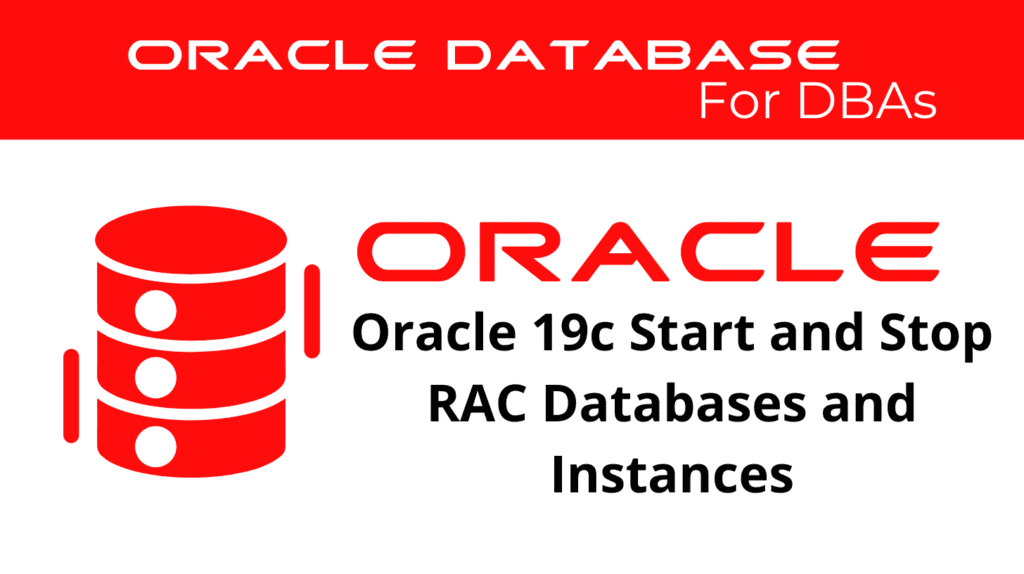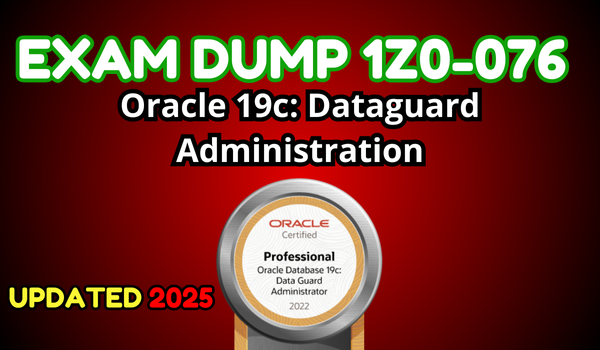
Starting and stopping RAC databases and instances in Oracle 19c is a fundamental task for database administrators. Proper management ensures that the databases are available when needed and can be shut down safely without data loss. In this blog, we will explore the processes involved in starting and stopping RAC databases and instances, focusing on best practices and essential commands. Understanding these components is key to efficient database operation and maintenance.
Starting and Stopping RAC Databases
Starting and stopping a Real Application Cluster database involves coordinating multiple instances across different nodes. Each instance must be managed correctly to ensure the entire database operates smoothly.
Starting RAC Databases
To start a RAC database, you need to start the Clusterware services first, followed by the database instances. This ensures that all necessary background processes and resources are available for the database to function.
-- Starting Clusterware services
crsctl start crs;
-- Starting the RAC database
srvctl start database -d myRACdb;
-- Starting a specific instance of the RAC database
srvctl start instance -d myRACdb -i myRACdb1;
Stopping RAC Databases
Stopping a RAC database involves shutting down each instance and then stopping the Clusterware services. It is crucial to perform these steps in the correct order to avoid data corruption or loss.
-- Stopping a specific instance of the RAC database
srvctl stop instance -d myRACdb -i myRACdb1;
-- Stopping the entire RAC database
srvctl stop database -d myRACdb;
-- Stopping Clusterware services
crsctl stop crs;
Managing RAC Instances
Managing RAC instances involves tasks such as monitoring instance status, handling instance failures, and ensuring that each instance is correctly configured. Regular monitoring and maintenance are crucial for optimal performance.
Monitoring RAC Instances
Oracle provides several views and tools to monitor the status and performance of RAC instances. The gv$instance and gv$session views offer detailed information about instance and session status.
-- Checking the status of RAC instances
SELECT instance_name, status FROM gv$instance;
-- Viewing active sessions in RAC instances
SELECT inst_id, sid, serial#, username, status FROM gv$session WHERE status = 'ACTIVE';
Handling Instance Failures
In case of an instance failure, the surviving instances can access the redo logs and perform recovery. Proper configuration ensures that the database remains consistent and available.
-- Forcing a log switch to ensure redo logs are archived
ALTER SYSTEM SWITCH LOGFILE;
-- Checking instance recovery status
SELECT inst_id, thread#, sequence#, applied FROM gv$archived_log WHERE applied = 'YES';
📢 You might also like: Oracle 19c Modify Initialization Parameters in a RAC Environment (Category: RAC and GRID)
Best Practices for Starting and Stopping RAC Databases
Effective management of starting and stopping RAC databases involves following best practices to ensure high availability and performance. This includes coordinating tasks across instances and regularly monitoring performance metrics.
Coordinating Start and Stop Operations
Coordinating the start and stop operations of RAC databases involves ensuring that all instances are correctly synchronized. This helps in maintaining data integrity and avoiding conflicts.
-- Starting all instances of a RAC database in coordination
srvctl start database -d myRACdb;
-- Stopping all instances of a RAC database in coordination
srvctl stop database -d myRACdb;
Regular Monitoring and Maintenance
Regularly monitoring the performance and status of RAC instances helps in identifying and resolving issues promptly. Oracle views such as gv$sysstat can provide insights into instance performance.
-- Checking performance metrics for RAC instances
SELECT inst_id, name, value FROM gv$sysstat WHERE name LIKE 'redo%';
Troubleshooting Issues in Starting and Stopping RAC Databases
Despite careful management, issues can still occur during the start and stop operations of RAC databases. Common problems include instance startup failures, network issues, and synchronization conflicts. Using Oracle’s diagnostic tools and views can help identify and resolve these issues.
Resolving Startup Failures
Instance startup failures can occur due to various reasons, such as configuration errors or resource limitations. It is essential to diagnose and resolve these issues promptly to ensure database availability.
-- Checking alert logs for startup errors
ALTER SYSTEM SET diag_adl_path='/path/to/alert/logs';
ALTER SYSTEM SET diag_adl_processname='myRACdb1';
-- Restarting an instance after resolving issues
srvctl start instance -d myRACdb -i myRACdb1;
Addressing Network Issues
Network issues can affect the communication between RAC instances, leading to performance degradation or failures. Regular monitoring and timely resolution of network problems are crucial for maintaining RAC database performance.
-- Checking network status for RAC instances
SELECT inst_id, host_name, status FROM gv$instance WHERE status = 'OPEN';
-- Restarting network services for RAC instances
srvctl restart nodeapps -n myNode1;
See more on Oracle’s website!
Conclusion
In conclusion, starting and stopping RAC databases and instances in Oracle 19c is essential for ensuring data integrity and high availability. Understanding the processes involved, best practices for management, and troubleshooting common issues are key responsibilities for database administrators. Regular monitoring, proactive maintenance, and proper configuration can significantly enhance the stability and performance of RAC environments. By following these guidelines, administrators can ensure a robust and well-managed Oracle RAC database environment.
Be Oracle RAC and GRID Certified Professional, this world is full of opportunities for qualified DBAs!





